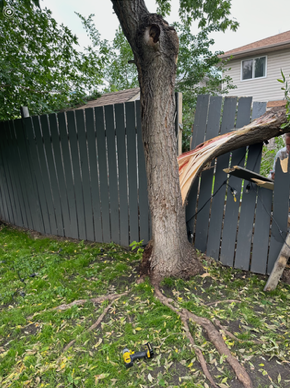Cabling
Strengthen Your Trees with Professional Cabling
Secure and Support Weak Limbs to Promote Healthy Growth
At Edmonton Arborist, we specialize in tree cabling and bracing, essential services designed to support weak or damaged trees on your property. Our expert arborists use the latest techniques and materials to install support systems (Cobra tree systems) that prevent structural failure, ensuring your trees continue to grow strong and healthy for years to come.

What Is Cabling
Tree cabling is an effective technique for conserving and restoring mature trees. We employ a specialized system called a Cobra, designed to secure vulnerable or fractured limbs and trunks. This durable system adapts to the tree’s growth, ensuring longevity without causing harm. By employing this method, you can significantly extend the lifespan and safety of compromised or high-risk trees.
Situations That Call for Tree Cabling
Understanding when your trees might benefit from cabling can help prevent potential damage to both the tree, and surrounding property, as well as ensure the trees longevity. Here are common scenarios where tree cabling is not just beneficial but necessary:
Weak or Splitting Branches
Trees with branches that are weak, over-extended, or showing signs of splitting are at risk of breaking. Cabling can provide the necessary support to prevent damage, especially under the weight of snow or in high winds.
Co-dominant Trunks
Trees with two main trunks, or co-dominant stems, have a natural weak point where the trunks meet. This structure is prone to splitting, particularly as the tree matures and the weight increases. Cabling can mitigate the risk by distributing the load more evenly.
Storm Damage Prevention
Trees in areas prone to severe weather, such as high winds or heavy snowfall, can benefit from the added stability that cabling offers, reducing the likelihood of storm-related damage.
Preservation of Historic or Sentimental Trees
Older, historic, or sentimental trees that contribute significantly to the landscape’s aesthetics but show signs of structural weakness can often be preserved through careful cabling, allowing them to remain a part of your garden for years to come.
Enhancing Tree Shape for Aesthetic Reasons
Sometimes, cabling is used not just for structural support but to influence the growth pattern of a tree for aesthetic purposes, helping it develop a more desirable shape over time.
In each of these situations, Edmonton Arborist’s professional assessment will determine the best course of action, ensuring that cabling is performed with the tree’s health and your property’s safety in mind.
Featured On:
Consumer choice award for Northern Alberta tree services 2022 and 2023!



